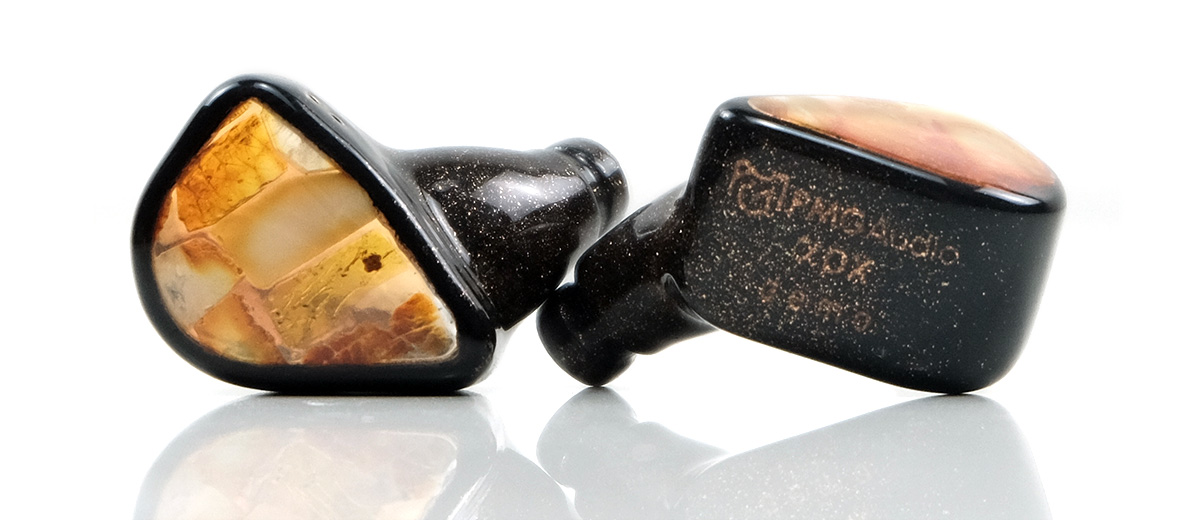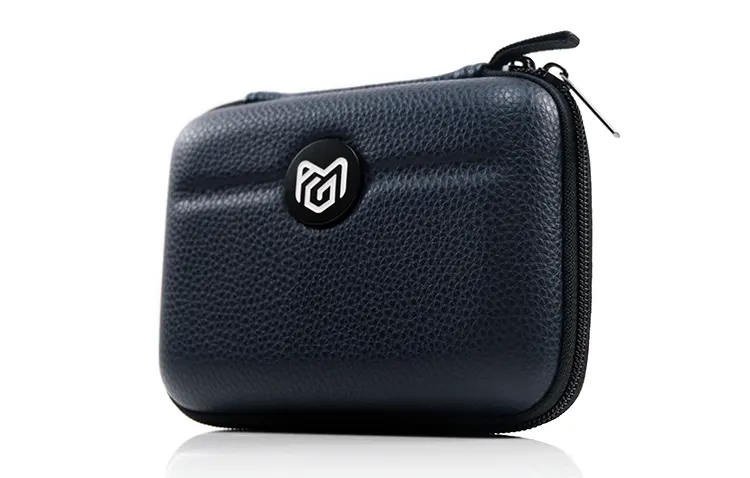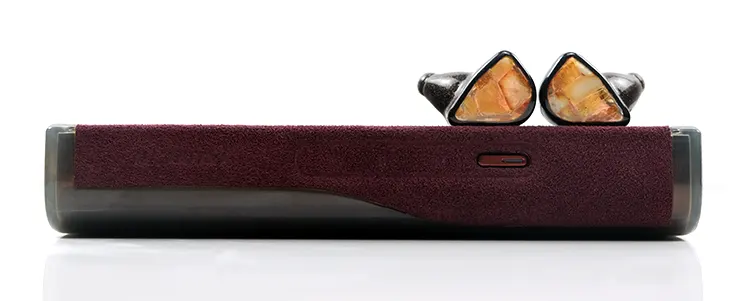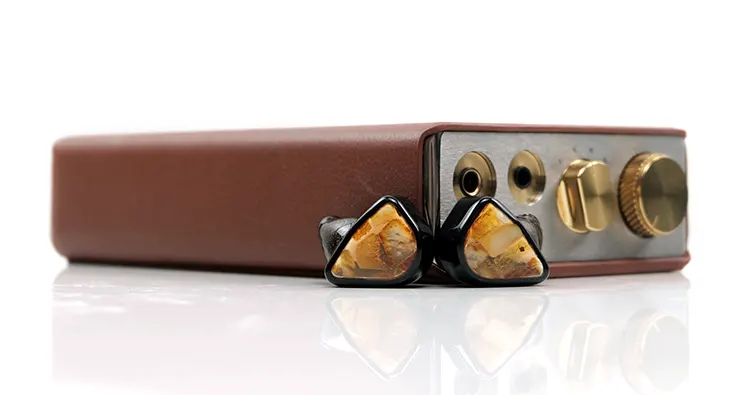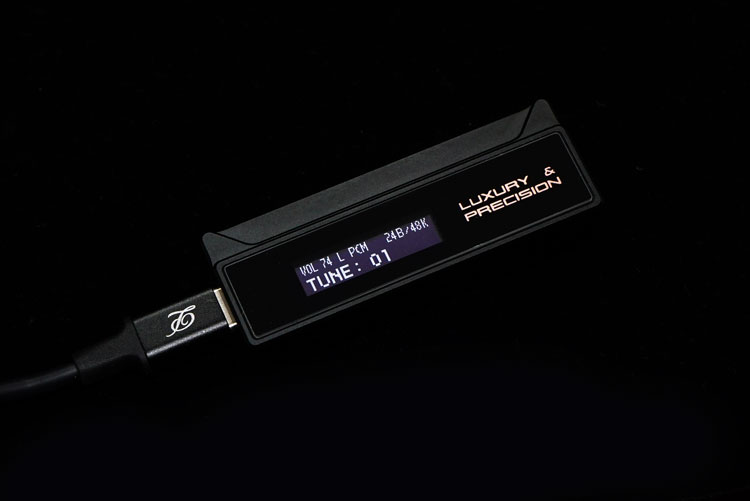Sound Impressions
The following sound impressions of the PMG Audio Apx were completed using a mix of the iBasso DX320 MAX Ti and the HiBy R8 II for both source and amplification. The Apx was fitted with the stock cable and the single-flange silicone tips.
Summary
The Apx performance has two paths. The first is the technical and on that path, it is the best universal IEM I have ever reviewed.
We are talking about huge staging capability and jaw-dropping resolution. The layering from a quality DAP combined with the complexity of its imaging capability is insane.
The very first time I put these on, and sadly, I do not even remember the song but the very first note was imaging so far out to the left I had to pause and replay it right away.
I have never heard an IEM that could pan that far left, and then, immediately pan to the very far right in equal measure in such a delicate and precise manner.
The second path is the Apx timbre which may well be more of a topic of debate.
You get a solid fundamental with a powerful, robust, and impressively extended sub-bass response to a more neutral, clear-sounding midrange. It then finishes with a more energetic and brighter tone the higher up you go.
Now, at first, I will be honest, I was not keen on the Apx highs. I admit, I was asking for that result since my preference throughout was for the silicone tips and a clean source which will accentuate the highs more than the foams.
However, the foams just killed the dynamic range and openness of the performance in comparison so they went back in the box.
I was prepared to compromise until, over hours and time, I felt the rawness of the highs calm down, particularly around 5k to 10k producing a peppy but less steely overtone.
Once we got there I felt that the Apx, whilst still not the most forgiving, certainly wowed me on capability like no other IEM has done before.
Frequency Response
For the most part, the Apx does a lot of things right concerning its response curve. Up to about 3-4k, it only moves a little north or south of the target with nothing really in the way of deep valleys or weird peaks.
That means you get some great elevation from 20Hz up to 80Hz from that Apx planar/dynamic driver combo. Maybe around 2-3 dB of a push northwards through the mid and upper bass which generates a nice subtle undertone of warmth into the lower mids.
The Apx mids FR remains relatively neutral to my ear from there up to 2k then stays a shade under the target up to 4k, perhaps not more than 1-2 dB at the most.
This is a modern midrange tuning and one I have seen a lot recently in high-end monitors. It does help to create a better sense of space though I must caveat by saying the Apx is not as relaxed compared to competitors such as the Multiverse Mentor or the Ragnar.
This is just as well because from 5k up to 10k the Apx goes progressively north and then further north by up to 5 dB in the upper treble.
I get why that is done, the sense of extension and space is palatable, and the clarity in the highs is immediately noticeable.
If you feel it is too much I would PMEQ a peaking filter of around Q0.9, applied over 5-10k, (center point 8k), and shift it down by around 2 dB. That can temper some of the upper harmonic overtones on the upper mids quite nicely. Anything more and I feel the Apx loses a bit of what makes it special.
Timbre
If you are like me and insist on using the stock silicone tips combined with a DAP knowing for exhilarating highs and clean complex mids then be prepared for a bit of treble overtone, at least for the first few days.
The Apx will not shy away from that and at times you can pick up a little bit of upper-harmonic dissonance on vocal and instrumental timbre in quieter passages or more intimate vocal settings. It can range from steely to just super clean depending on where everything is pitching in the music.
That little PMEQ adjustment I mentioned earlier helps to cleanse the tone of that smidgen of dissonance producing a purer, smoother tone without losing anything from the majesty of the Apx highs.
You do not need to do that though with other sources. The Apx coloration will adapt and reflect what you are plugging it into. With the Cayin N7, it sounded smoother and more analog in tone though it was perhaps my least favorite for vocal presence, (read more further down on page 2 as to why).
More than that, it is an IEM that does better than most at highlighting timbre modes and nuanced changes in the audio playback from players such as the N8ii when switching from tube to solid-state.
Not that I can’t detect it from any other IEM but rather never have the changes been so easy to pick up using the Apx.
There is a gentle bloom and sweetness that runs through the Apx mids with the N8ii that suddenly flattens and loses its ‘grandeur’ when moving to solid-state mode. The change was never more obvious than with the Apx.
Staging & Dynamics
PMG Audio nailed the Apx’s staging capability. Somehow I am not wholly surprised Piotr could do this. I had inklings of this type of staging magic in a more humble offering, the Custom Art FIBAE 7.
It’s not the expanse of the Apx, of which there is plenty. Rather, it’s what is happening within it. The imaging and the dynamic range of those spatial cues are frightening in their speed and impact.
And like I said right at the start of these impressions, the stereo imaging is as far wide and deep as you can imagine from an IEM. This is the least ‘inside your head’ soundstage I have ever heard from a monitor.
This is not an overly dry or digital-sounding midrange landscape either, despite the multitude of BA drivers tasked with delivering the guts of the music. There is enough decay and warmth for a more natural underbelly but with a typical BA level of control and speed to keep the mids beautifully separated and open-sounding.
I have to give special mention also to the depth the Apx creates. I have heard a few very wide IEMs recently such as the Ronin and the Multiverse Mentor but neither have the same depth and power as the Apx.
Yes, there are dynamic driver IEMs like the recently reviewed FIR Audio e12 that create even more power and slam but nowhere near the same expanse above and around as the Apx.
Just one word of warning. Pair the Apx with a capable source because, with several dongle pairings, I felt its wings were clipped a little in space on either side and behind giving a slightly flatter performance.
Synergy
Efficiency & Sensitivity
The PMG Audio Apx is rated at an impedance level of 5Ω ±1Ω with an SPL of 107dB @1kHz.
The Apx’s sensitivity level is not that low for a monitor stuffed with planar drivers but nothing I would class as super sensitive either. It tows a nice line between the likes of some of Campfire Audio’s BA monitors and the less efficient EST-driver hybrids.
That means low gain, balanced output on either a dongle or a DAC with typical median volume levels will be more than enough to get the Apx to suitable listening levels.
There is no risk from higher noise floors either. Not once did I catch any undesirable background hiss from analog amplification, even with desktop setups such as the Ferrum OOR with a high gain balanced XLR setup using the DX320 MAX Ti as my source DAC.
Dynamic range is a different kettle of fish and I have to admit the dongles did ok but sounded somewhat softer and less distinct than devices with better voltage rails and generally more power.
So yes, the Apx can scale on a moderate level. The more resolving and better the DAP is for headroom the better this monitor performs which I think is critically important because there are levels to the Apx’s performance that only reveal itself when you up the quality of the source.
DAP Pairings
That last statement segways nicely into the DAP pairings. Unless you are sensitive to the treble shelf from the Apx and using silicone tips, then the iBasso DX320 MAX Ti pairing blows everything else out of the water.
Before I explain why I will go through the honorary mentions. The DAPs tested included the Cayin N8ii and the N7, both of which do very nicely in keeping the Apx treble in check, particularly in Class A for the N7 or Tube mode for the N8ii.
I would add that N8ii P+ is recommended to get that low-end Apx planar/dynamic driver combo moving with any sense of urgency and impact. HiBy’s R8 II pairing is better for slam and impact from the Apx and also does better in terms of treble reach and vocal presence compared to the N7.
The weakness of these DAPs for me was the N7/Apx vocal presence, which was much too relaxed, just as the N8ii set of lows was a little bit soft for my preference, as was the lower treble performance from the R8 II.
In walks the DX320 MAX Ti, but only if you are not hugely sensitive to energetic treble. If so, then the others might be worth checking out.
This pairing was on point for dynamic range, resolution, and layering. Its imaging in the mids and highs was superlative revealing a lot more information that I did not pick up as well on the other 3 DAPs.
It was almost like the Apx wings were clipped on the other DAPs and gloriously restored on the iBasso flagship. Not only was the imaging wider and deeper but more elaborate and complex-sounding. This is the type of pairing where you hear what the Apx is capable of.
Dongle Pairings
I would hesitate a bit more on dongle pairings. Not because they sound bad with the Apx but rather because the DAPs scale and add more dynamic range and control to the performance.
You will notice a bit of a difference moving from the likes of the R8 II down to FC6 or the N8ii down to the RU7, even if you stick to a balanced output.
That being said, if I did go with a dongle out of the 4 tested I would probably opt for the LP W2 or the RU7 over the FC6 and Questyle M15.
Out of those 4, the Questyle imaging was not taking advantage of the expansive staging capability of the Apx. It sounded very narrow with vocals too far forward.
Bass performance was above average from this pairing but if I want huge bass I rather go with the FIR Audio e12 or the Campfire Audio Trifecta.
The FC6 was endearing for vocal presence and offered a weighty juicy bass but again, its width and height were not as expansive compared to the top two contenders. This dongle works well though if you want a little less treble energy and more focus on the mids and lows.
The W2 vocal imaging and bass impact was more focused than the RU7 which sounded a bit relaxed through the mids. However, the RU7 staged better on a macro level making better use of the Apx’s impressive stereo separation.
The W2 was also a bit brighter on the highs whereas the RU7/Apx pairing is ideal for those who are more treble-sensitive but do not want to lose and treble extension at the same time.




